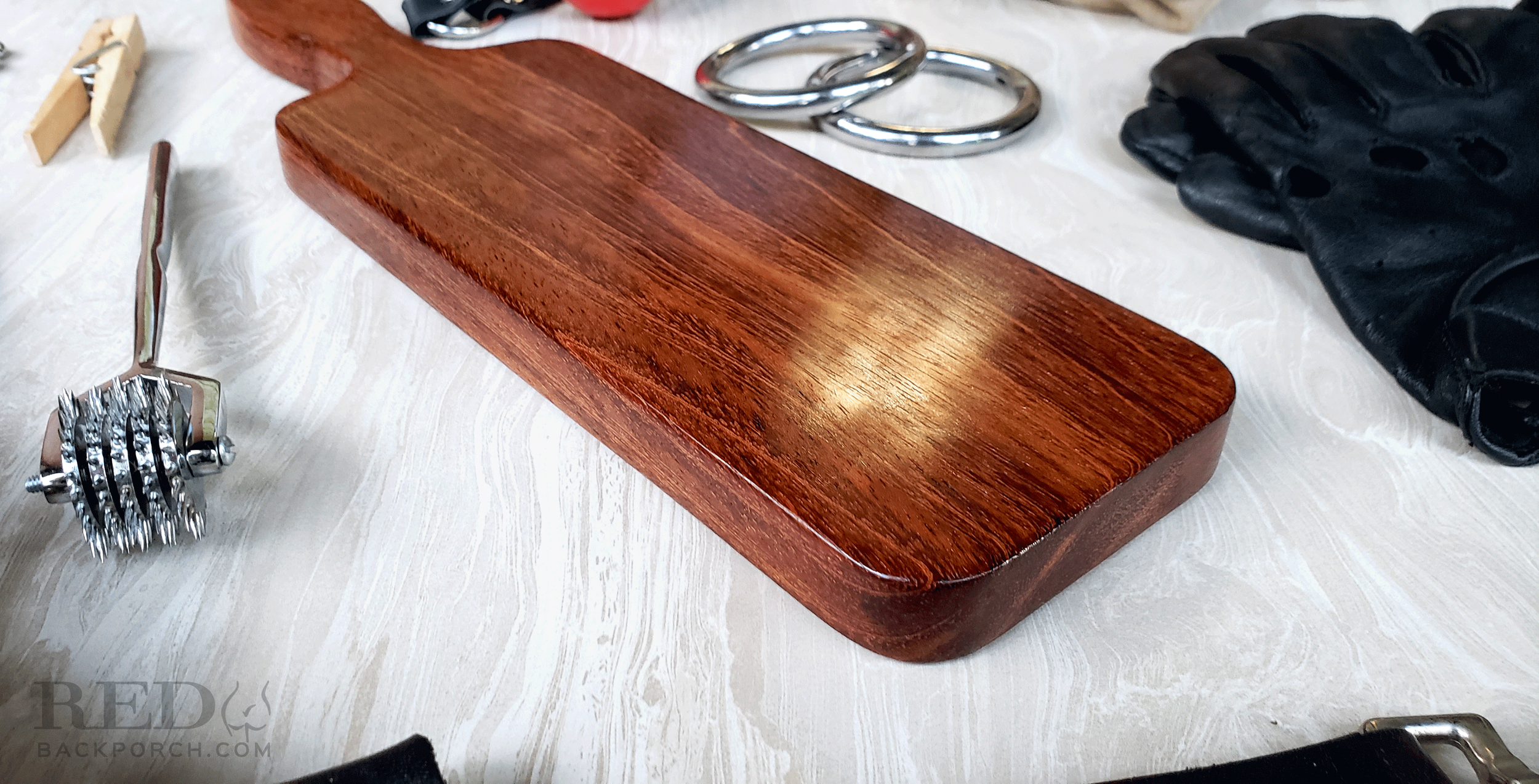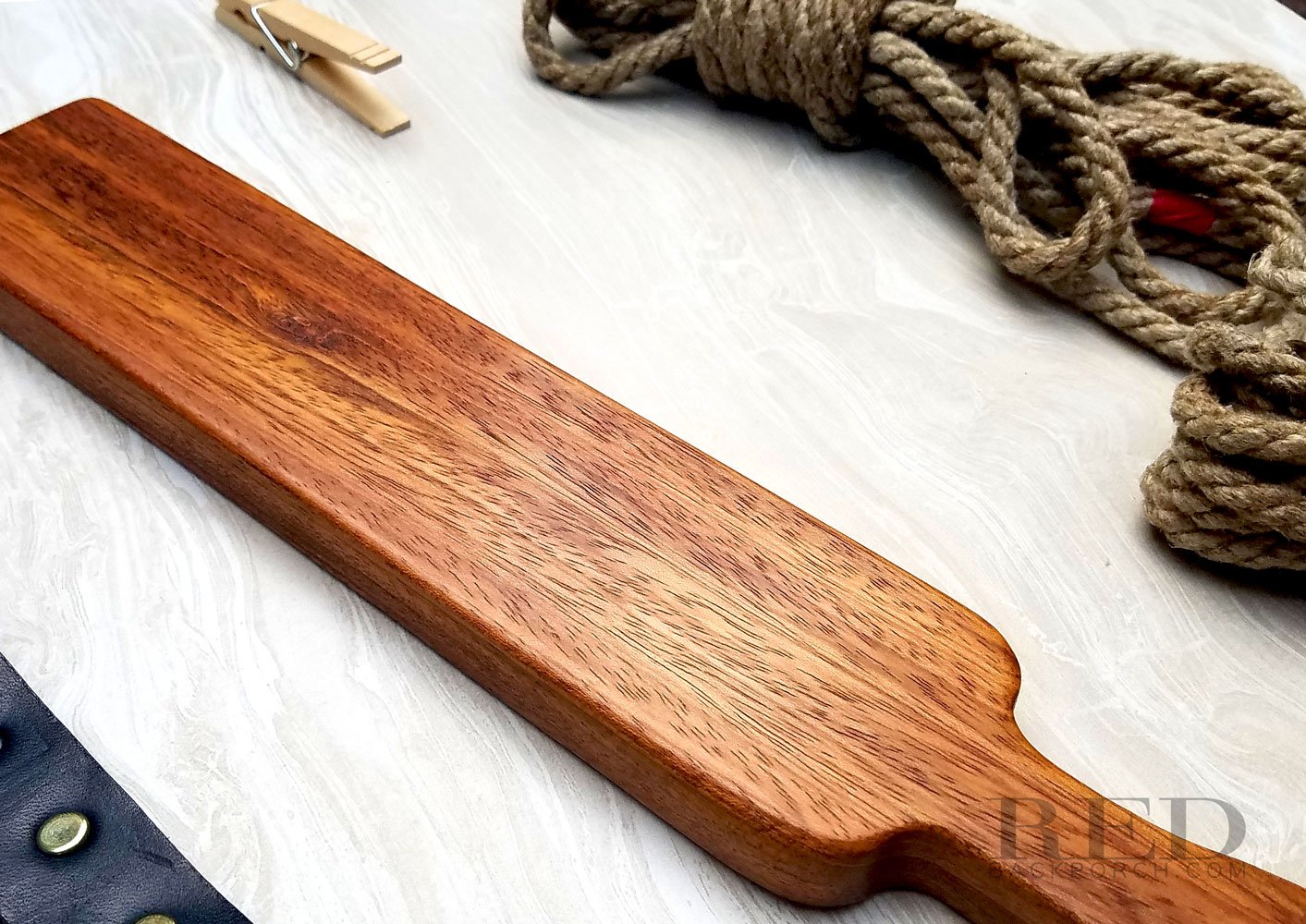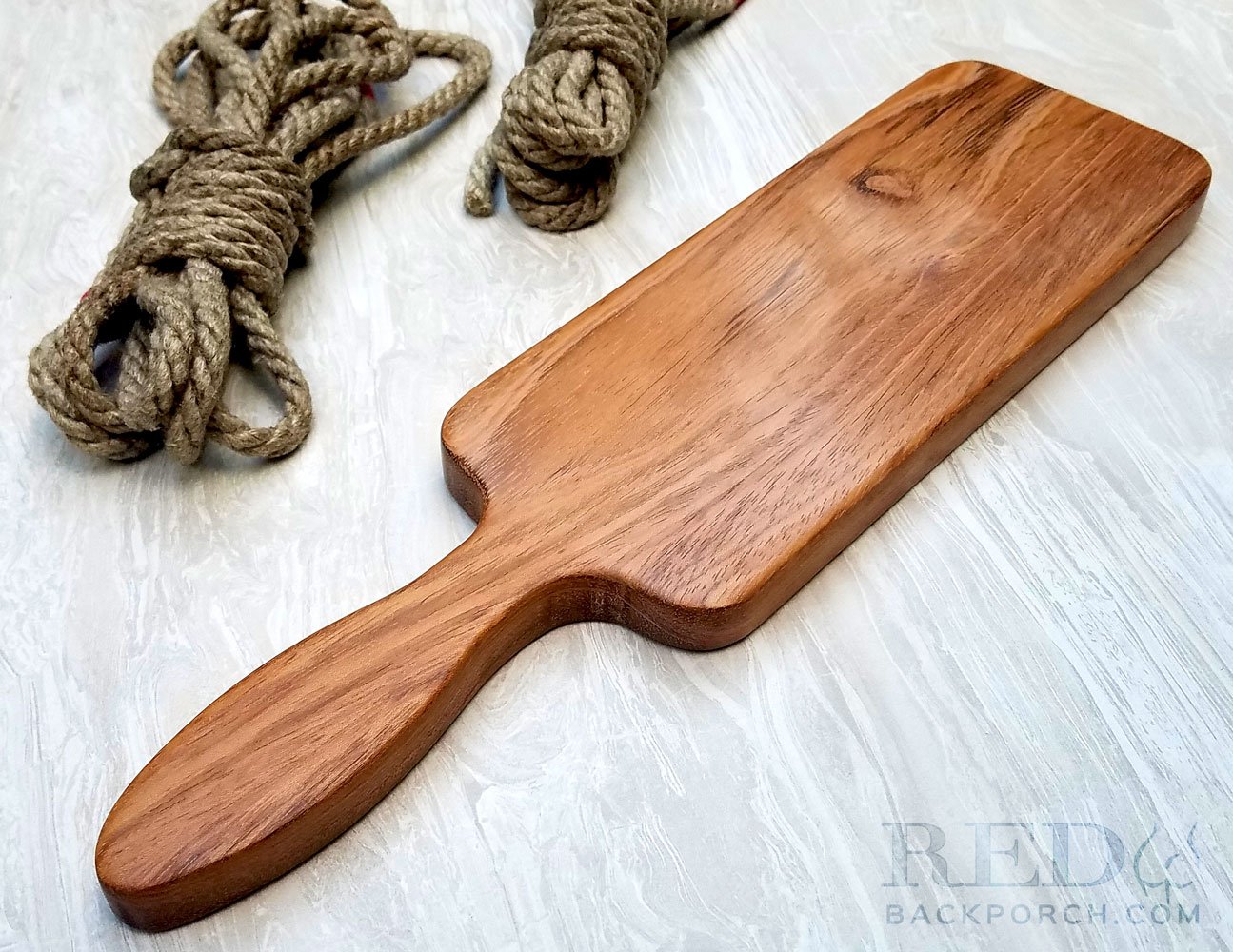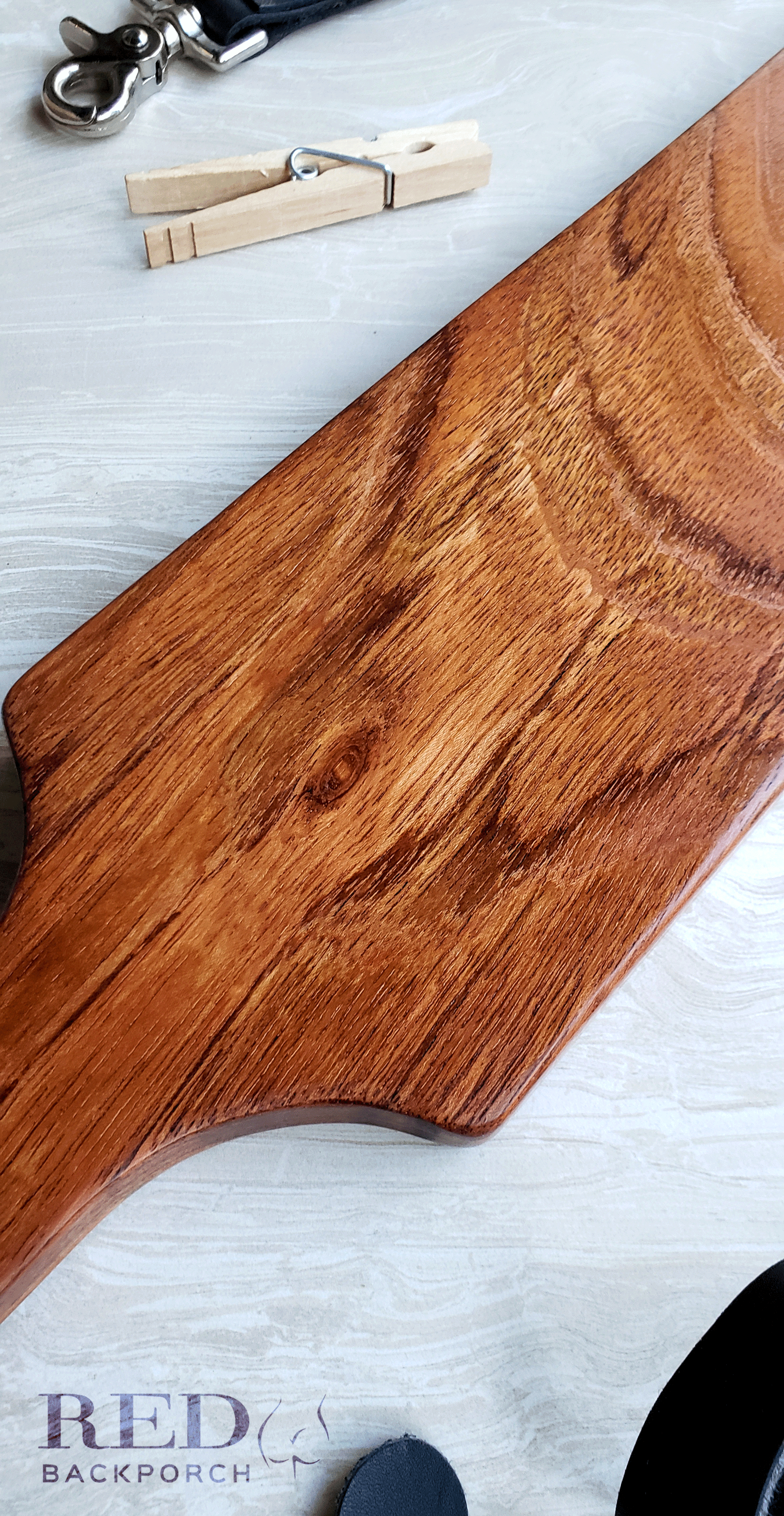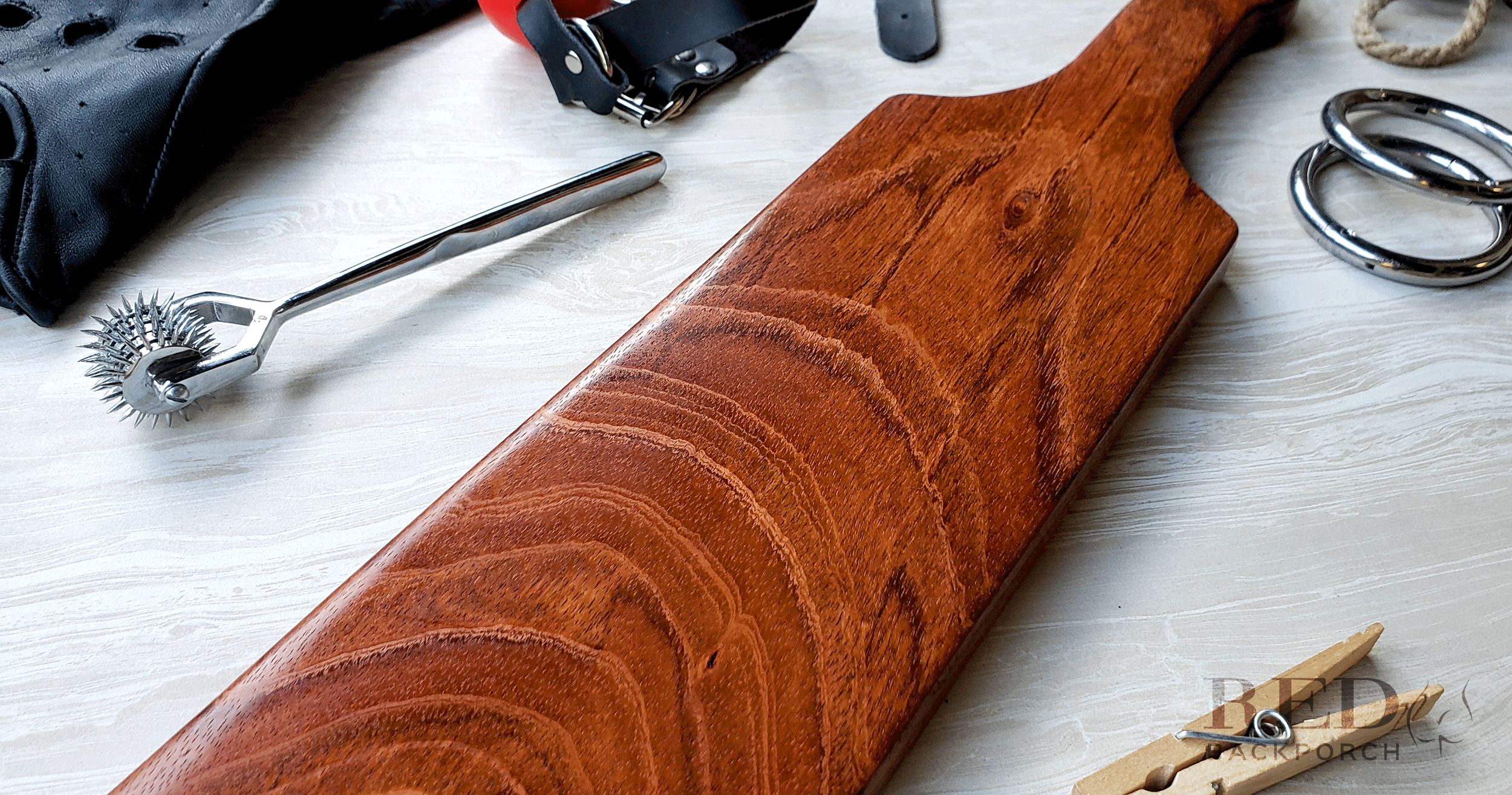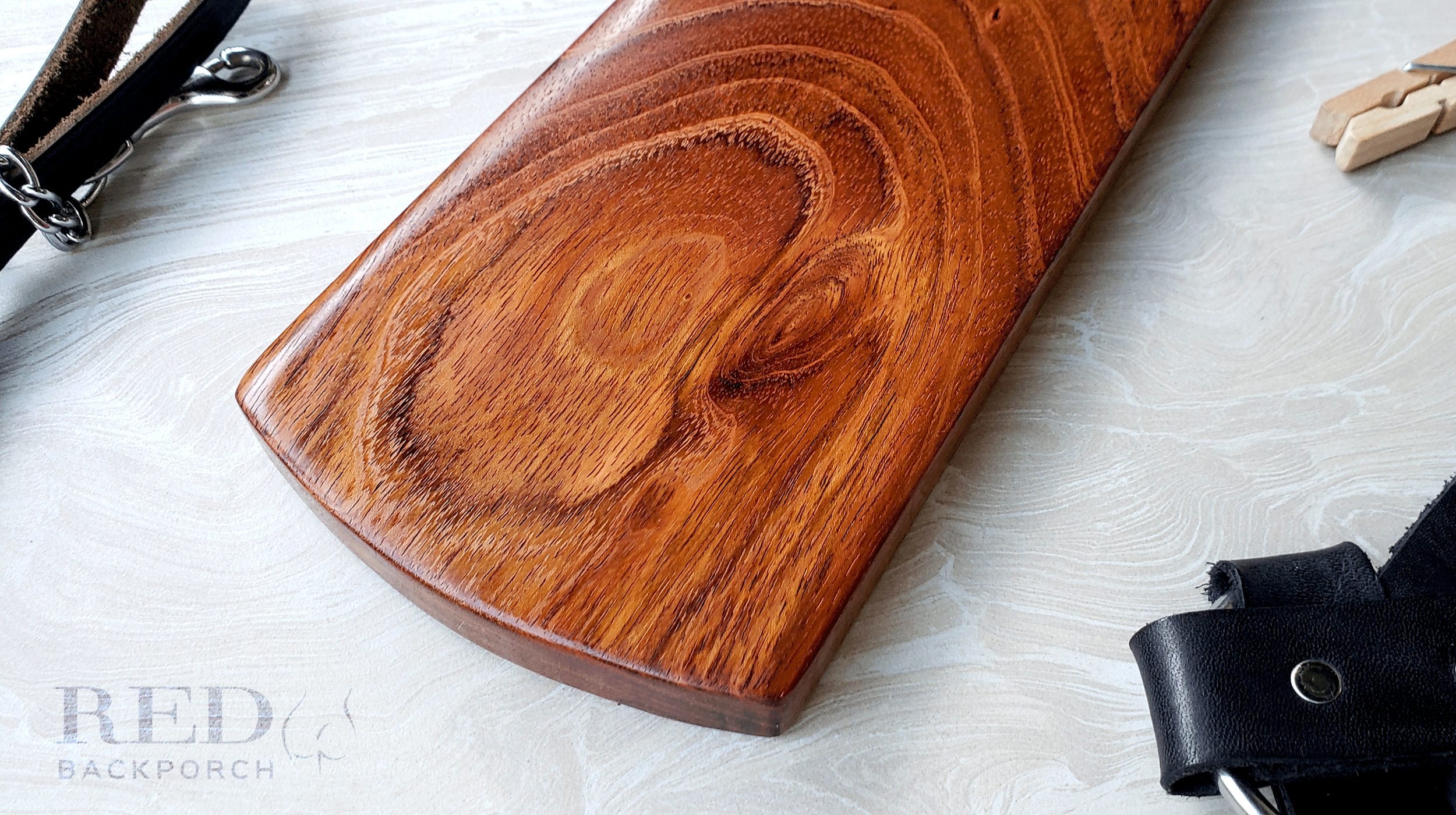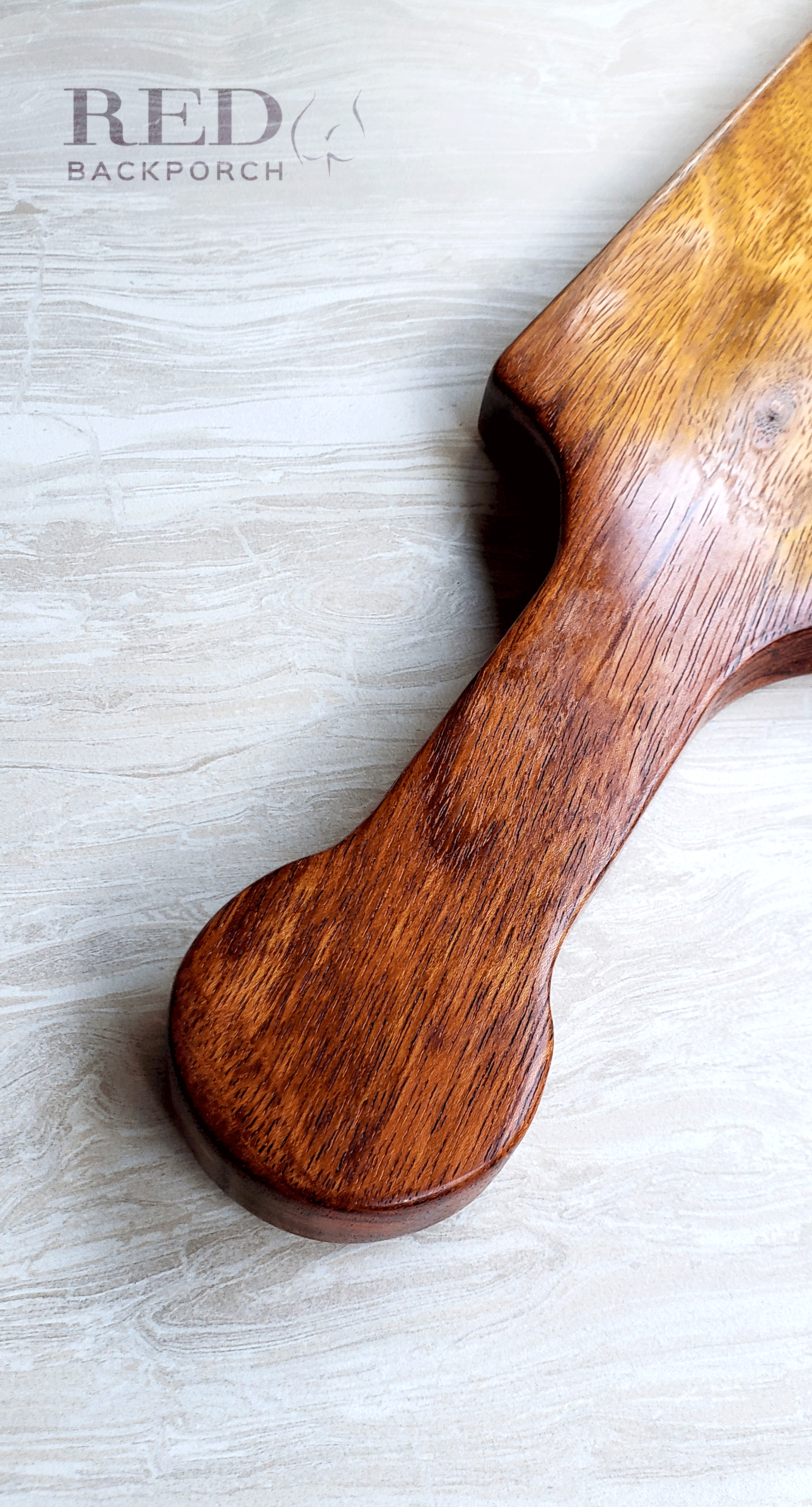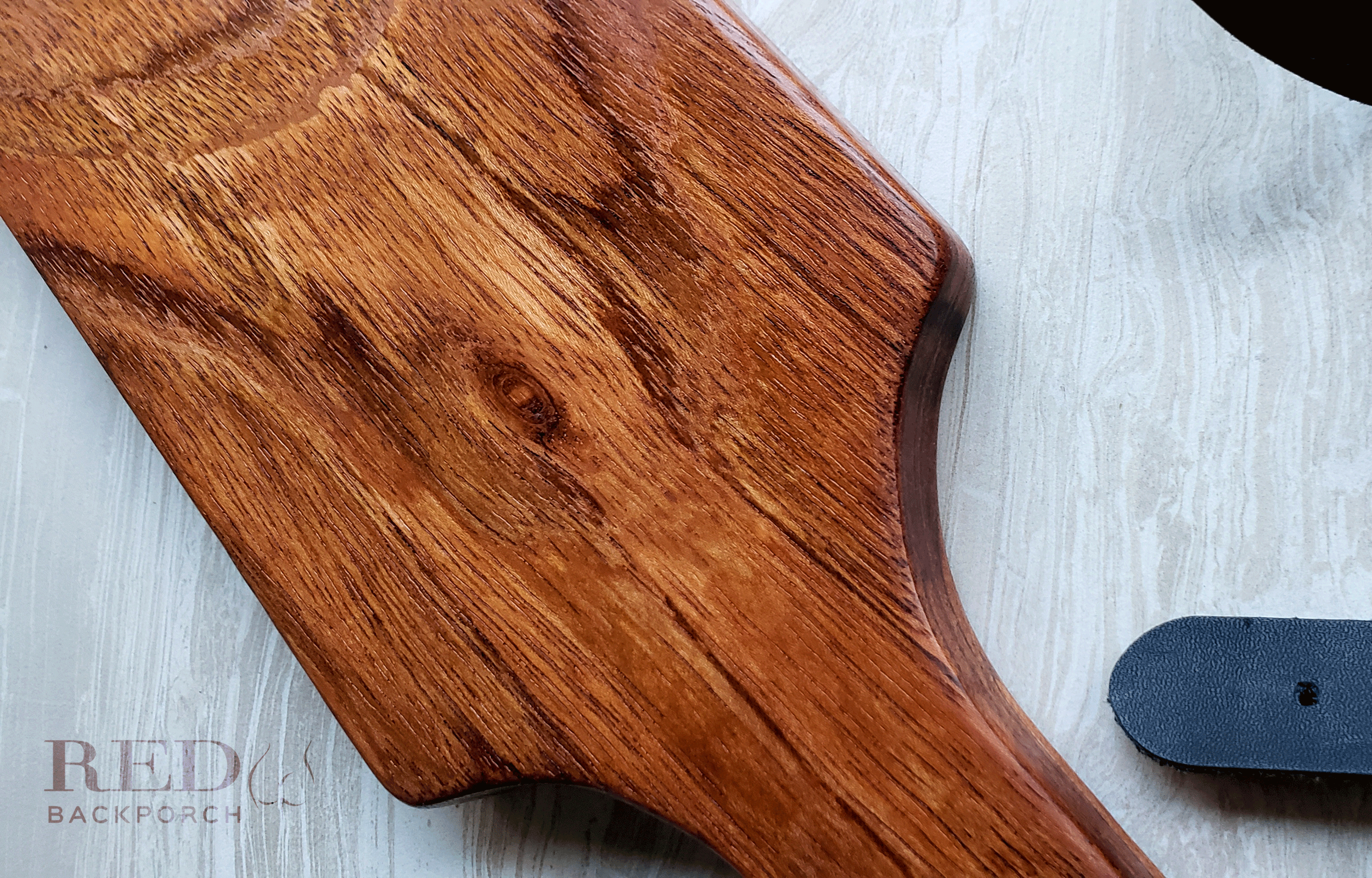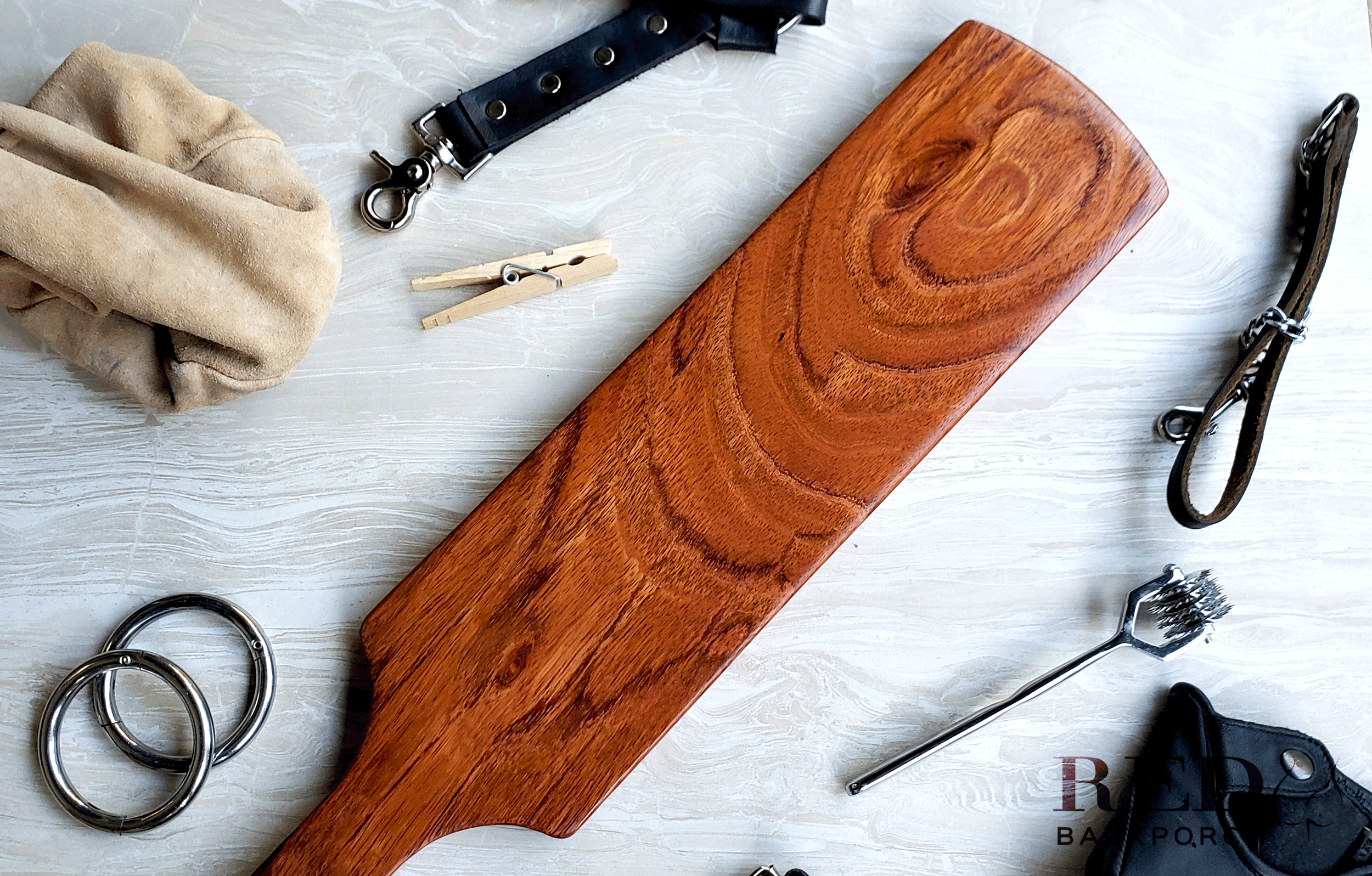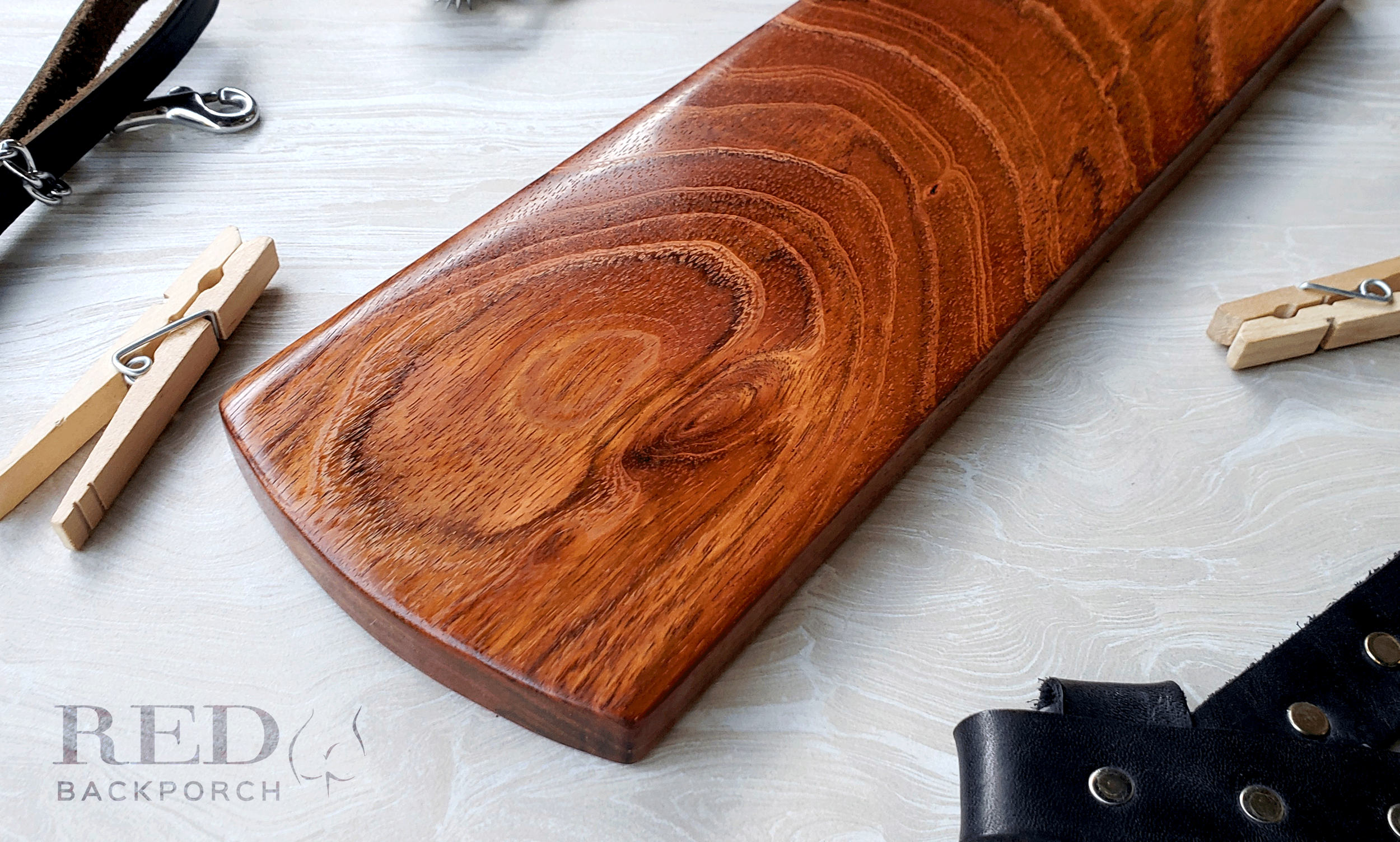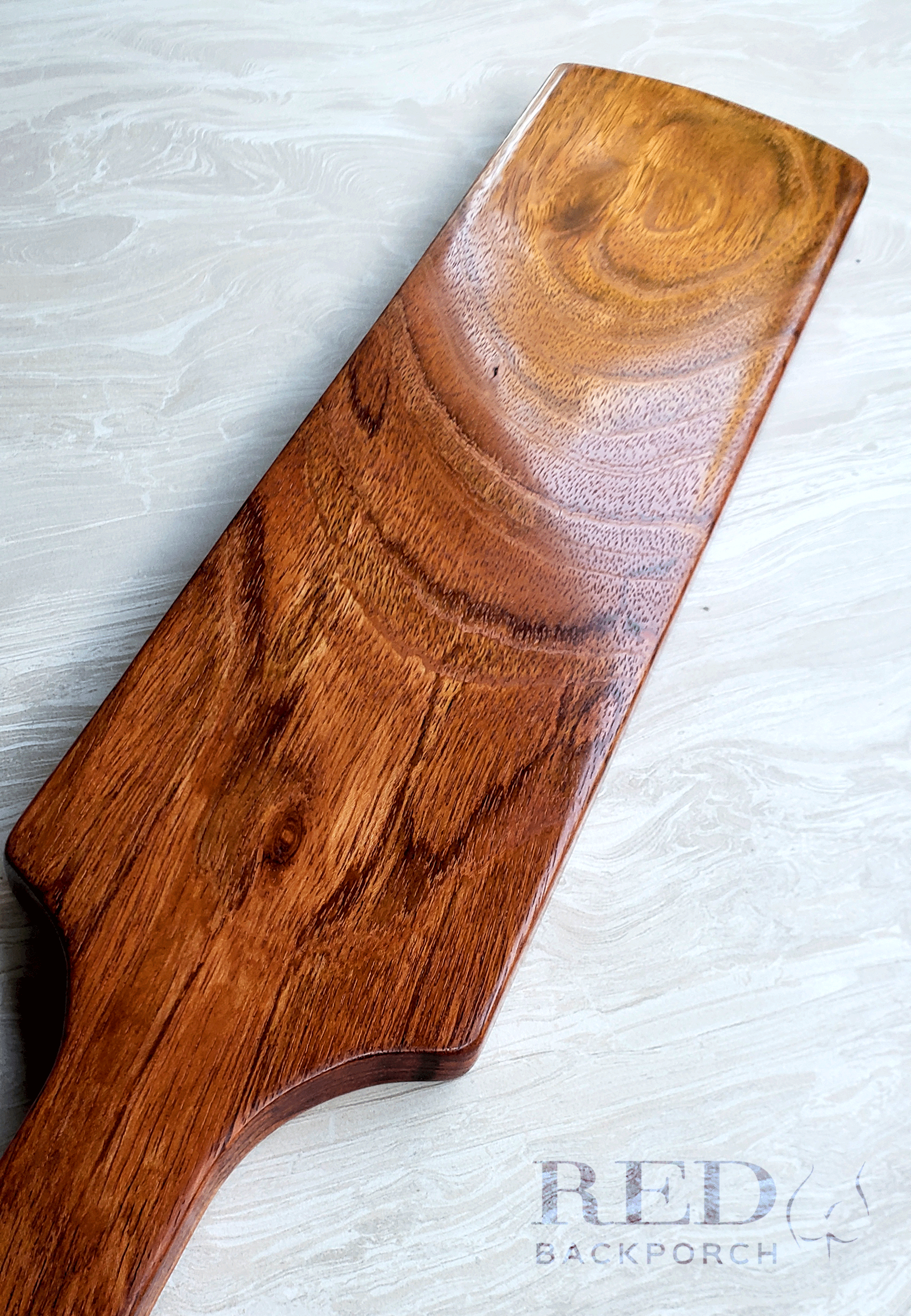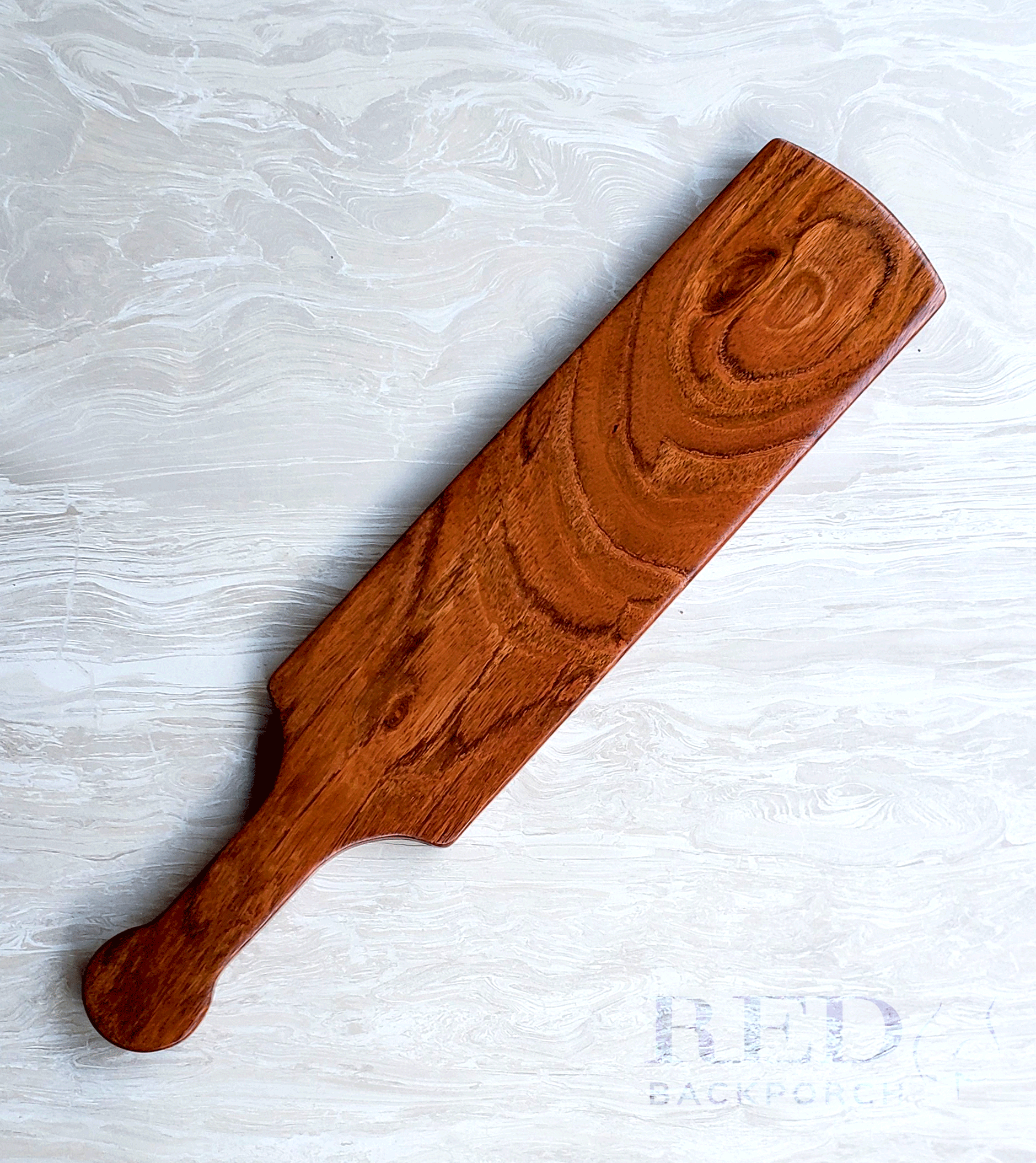What's the deal with Jatoba?
Is It Really That Hard?
First of all, let’s get the name right. Jatoba is pronounced with a texting laugh - ha - and not your typical jovial “J” sound. The wood comes from Central and South America so we suppose that’s no surprise. It’s an exotic hardwood with an exotic name. Never mind the tree it comes from holds the moniker of Stinktoe in some circles. Thankfully, that’s due to its unpleasantly fragrant fruit and NOT the wood.
Second, and more importantly, this wood is dense. Like really dense. If you google “Janka Hardness”, you’ll see Jatoba near the top of the charts.
Of all our wooden spanking paddles, the ones in Jatoba hit noticeably harder than the same paddles made in any of our other woods. Even Hickory and Padauk, which take our most intense paddles up a notch, don’t compare to the hardness of Jatoba.
To be sure, the tight grain pattern of Jatoba makes it heavier than the rest, but it also takes our extensive sanding process to a whole new level of shine. These paddles feel silky smooth to the touch and bounce light like a mirror. Imagine how they’ll bounce off that bottom!
Though not our favorite wood in terms of aesthetics (I’m looking at you Black Walnut), Jatoba does have a beauty all its own. There’s a slight reddish tint to the medium-dark brown wood grain reminiscent of that auburn brunette you almost fell in love with.
Frequently, the grain will showcase contrasting veins of light and dark patterns streaking through the wood. But occasionally, we’re delighted to source Jatoba with swirls in the grain pattern. These pieces always turn out stunning and make you forget the tree’s unpleasant moniker, Old Stink Toe.



